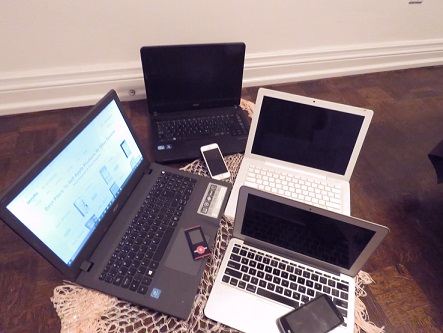
Refurbished Devices: Is Refurbished Gadget a Good Deal?
The number of mobile phones produced annually has already exceeded half the population of Earth. It doesn’t help the fact that the price tag for the A-brand cell phone can give you the shock of the year. The same goes for TV-sets, laptops and tablets.
If you’re in a tight spot right now, or just thrifty, the second-hand market might be the answer. Still, buying from eBay is always risky. There’s no way to know what you paid for until you receive it. Refurbished gadgets are the other alternative. For instance, a refurbished Apple Watch Series 2 is available for $470, which amounts to a $70 discount. An iPhone 6S Plus (64GB) will cost you $110 less, and a Galaxy S6 edge 64GB – $222 less. If those aren’t good deals, then I don’t know what is.
The refurbished gadgets are the devices with damaged packages or returned by owners within several weeks or days from purchase. The reasons may vary from a minor cosmetic fault to an abrupt change of mind. But, even if the reason is a grave one, the manufacturer can fix the problem. The gadget is inspected, cleaned and the faulty parts are replaced when necessary. The software is reset to factory condition, and then the device is repacked and goes back into the market as the refurbished or pre-owned one. So, in many cases the phones and tablets are as good as new.
Many companies such as Apple, Dell, and Samsung have their own refurbishment programs. The refurbished gadgets are available on the Apple Store or Samsung Official site, or through the network of brand outlets like Amazon Kindle Outlet, Dell Outlet and the Nikon Outlet. Refurbished TV sets and other home multimedia can be stumbled upon even in your local Walmart.
But as the old mouse said on seeing the cheese in a mousetrap, “It’s too good to be true!” Apple has the most considerate approach to the refurbished goods. The ‘fruit’ gadgets are thoroughly inspected and scrupulously repacked. And this is topped with a year’s warranty for good measure. No wonder, Apple makes as much money from the pre-owned goods as it does from the new one. Rumor has it, that Apple is trying to launch the outlet in India. The laws of the state have prohibited the business until recently, but taking into account that Apple moved the manufacturing factories to India, they can probably succeed in their pursuit.
Other companies aren’t so generous and the post-refurbishing warranty is no longer than 90 days. So, if your purchase breaks beyond this time limit, you’ll have to pay for repair. This goes for TV sets and computer peripherals. As for the latter, the refurbished peripherals are risky to buy. For instance, external hard drives are very fragile. USB sockets are their weak place. But there’s no way to tell if the sockets are the only problem fixed. You can get bad sectors.
Some vendors do inform the buyers about the faults fixed. They can include screens, circuits or sound dynamics, batteries. Others just put it like “as good as new” and you have to go with it.
But, let’s imagine that the vendor honestly listed all the repairs. How do you decide if the game is worth it? The best buys are the goods with damaged packages. Chances are high that you’ll get a nice gadget in the not so presentable box. Minor scratches on the back of a tablet can do as well, but be prepared to face some malfunctions as the gadget could be scratched when dropped. The replaced screen is also OK for iPhones and Samsungs, as this replacement is a routine procedure and doesn’t influence the hardware much. But if the model is not the newest one, you can get the handheld with the half-dead battery. This situation is most likely to happen to iPhone 5 and 5S.
The gadgets with the replaced motherboard are in the grey zone. They may or may not work properly. It depends on the professionalism of the repairman, on the part manufacturing date and on its compatibility with other components.
Motherboards for laptops are easier to find than for cell phones. If the refurbishment was done by the manufacturer, the replaced part is likely to be the native one. But if the refurbishment was done by the vendor, other variants are possible. You can get a laptop with a no-name third party motherboard. The same goes for the replacement of a screen, a hard drive or SSD and other parts. Always try to make sure that the new parts are the native ones, or at least come from the supply chain approved by the manufacturer.
So, let me summarize the bible of a refurbished goods purchaser:
- Buy from authorized outlets or resellers.
- Make sure the refurbishment was done by the manufacturer.
- Check the warranty period.
- Decide for yourself where to draw the line, in other words, what faults you’re going to put up with.

Refurbished devices. Credit photo: iGotOffer.com






Facebook
Twitter
RSS